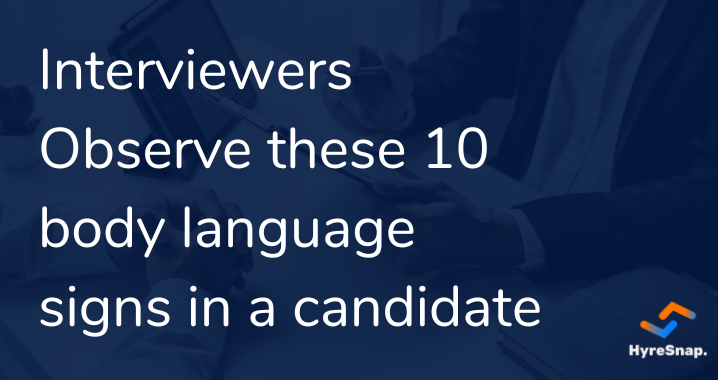50+ Interview Questions For SQL in 2023
4 min read

Where can I get the latest interview questions for SQL?
You are at the right webpage if you are seeking questions for similar questions in 2023. Here you will get answers to all the challenging SQL questions that will help you execute the interview to hire a suitable SQL candidate for your organisation.
In case you do not have tech experts in your team, you can leverage any Interview as a Service platform available online.
Such platforms have subject matter experts who execute interviews, analyse candidates, and give you detailed reports based on which you can select a suitable candidate.
If you are willing to execute interviews on your own, consider asking the following questions from the applicants to analyse their SQL knowledge:
As an interviewer, there are several prerequisites to ensure a successful interview process. Here are some of the key prerequisites:
Familiarity with the job role and responsibilities
The interviewer should clearly understand the job role and responsibilities that the candidate will be expected to undertake. This helps in asking relevant questions and assessing the candidate's suitability for the job.
Preparation of questions
The interviewer should prepare a set of questions relevant to the job role and can help assess the candidate's knowledge, skills, and experience.
Familiarity with the candidate's resume
The interviewer should carefully review the candidate's resume and cover letter before the interview. This helps in understanding the candidate's qualifications, experience, and achievements.
Clear communication
The interviewer should have good communication skills to convey the job role and responsibilities to the candidate clearly. The interviewer should also be able to explain the interview process and answer any candidate's questions.
Professionalism
The interviewer should maintain a professional attitude throughout the interview process. This includes being punctual, respecting the candidate's time, and providing feedback constructively and respectfully.
Legal compliance
The interviewer should be aware of legal compliance requirements, including equal opportunity employment laws and nondiscrimination laws.
Overall, the interviewer should be well-prepared, professional, and able to effectively communicate with the candidate to ensure a successful interview process.
What is SQL, and what is it used for?
SQL stands for Structured Query Language and is used to manage and manipulate relational databases. It allows you to create, update, and retrieve data from databases.
What is a primary key in SQL?
A primary key is a unique identifier for a record in a table. It ensures that each record is unique and can be used to join tables together.
What is a foreign key in SQL?
A foreign key is a field in a table that links to the primary key in another table. It is used to enforce referential integrity and to create relationships between tables.
What is a view in SQL?
A view is a virtual table created by executing a SQL query. It is used to simplify complex queries and provide a simplified data view.
What is normalisation in SQL?
Normalisation is the process of organising data in a database to reduce redundancy and improve data integrity. It involves dividing larger tables into smaller tables and creating relationships between them.
What is the difference between a clustered and non-clustered index in SQL?
A clustered index determines the physical order of the data in a table. A non-clustered index creates a separate data structure that points to the physical location of the data.
What is a stored procedure in SQL?
A stored procedure is a pre-compiled SQL statement stored in the database. It is used to simplify complex queries and to improve performance by reducing network traffic.
What is a trigger in SQL?
A trigger is a special type of stored procedure automatically executed in response to certain database events. It is used to enforce business rules and to provide additional functionality.
What is a subquery in SQL?
A subquery is a query that is embedded within another query. It is used to retrieve data that meets certain criteria.
What is the difference between inner and outer join in SQL?
An inner join returns only the records that match both tables. An outer join returns all the records from one table and the matching records from the other table.
What is a cursor in SQL?
A cursor is a database object used to retrieve and manipulate data row by row. It is used when you need to perform complex operations that cannot be done with a single SQL statement.
What is a transaction in SQL?
A transaction is a series of SQL statements executed as a single unit. It ensures that all the statements are completed successfully or rolled back if an error occurs.
What is a deadlock in SQL?
A deadlock occurs when two or more processes are waiting for each other to release a resource. It can cause the database to hang and can be resolved by killing one of the processes.
What is the difference between a view and a table in SQL?
A table is a physical object that stores data in a database. A view is a virtual table created by executing a SQL query.
What is the difference between a unique constraint and a primary key in SQL?
A unique constraint ensures that each record in a table is unique, but it does not provide a unique identifier for the record. A primary key provides a unique identifier for the record and ensures each record is unique.
What is a correlated subquery in SQL, and how does it differ from a regular subquery?
A correlated subquery is a subquery that references a column from the outer query. It is executed once for each row in the outer query, which can make it slower than a regular subquery. A regular subquery is executed once, and the result is used in the outer query.
What is the difference between a self-join and a regular join in SQL?
A self-join is a join where a table is joined to itself. It creates a relationship between two rows in the same table. A regular join is a join where two different tables are joined based on a common column.
What is the difference between a subquery and a derived table in SQL?
A subquery is a query that is embedded within another query. A derived table is a table that is created by executing a subquery in the FROM clause of a query. The main difference is that a subquery returns a single value or a set of values, whereas a derived table returns a set of rows and columns.
What is the difference between a clustered and non-clustered index in SQL, and when would you use each?
A clustered index determines the physical order of the data in a table. A non-clustered index creates a separate data structure that points to the physical location of the data.
You would use a clustered index when you want to retrieve data quickly based on the order of the data. You would use a non-clustered index when you want to retrieve data quickly based on a specific column.
What is a recursive query in SQL, and how is it used?
A recursive query is a query that references itself in the FROM clause. It traverses hierarchical data structures, such as organisational charts or product categories. Recursive queries are implemented using the WITH RECURSIVE clause in SQL.
What is the difference between aggregate and scalar functions in SQL?
An aggregate function operates on a group of values and returns a single value, such as the sum or average of a column. A scalar function operates on a single value and returns a single value, such as the length or substring of a string.
What is the difference between an inner join and a cross join in SQL?
An inner join returns only the records that match both tables. A cross-join returns all possible combinations of records from both tables.
What is a subselect in SQL, and how is it used?
A subselect is a query used within another query to retrieve data from a table based on certain criteria. It is often used to filter or join data from multiple tables.
What is a full-text search in SQL, and how is it implemented?
A full-text search is a search that allows you to search for text within the contents of a column, such as a document or an email. It is implemented using a full-text index, a special index type that allows for fast text searches.
What is the difference between a primary key and a unique index in SQL?
A primary key is a column or set of columns uniquely identifying each table record. A unique index ensures that each record in a table is unique, but it does not necessarily provide a unique identifier for the record.
What is a cursor, and how is it used in SQL?
A cursor is a database object used to retrieve and manipulate data row by row. It is used when you need to perform complex operations that cannot be done with a single SQL statement, such as iterating through a result set and updating the data.
How do you identify and remove duplicate records in a table?
To identify and remove duplicate records, you can use the DISTINCT keyword to select unique records and the GROUP BY clause to group records based on certain columns.
You can then use the HAVING clause to filter the results only to show records with a count greater than one, indicating that they are duplicates. To remove duplicates, you can use the DELETE statement with a subquery that selects the duplicate records.
How do you optimise a slow-performing SQL query?
To optimise a slow-performing SQL query, you can start by analysing the execution plan to identify performance bottlenecks.
You can then consider using indexes to speed up data retrieval, rewriting the query to use more efficient syntax or joins, or partitioning large tables to reduce the amount of data that needs to be scanned.
How do you handle null values in SQL?
Null values represent missing or unknown data in SQL. To handle null values, you can use the IS NULL or IS NOT NULL operators to test for null values or use the COALESCE or NVL functions to substitute a default value for null values.
How do you create a backup of a database in SQL?
To create a database backup in SQL, you can use the BACKUP DATABASE statement to create a backup file containing a copy of the database's data and schema. You can also use SQL Server Management Studio or other tools to create a backup file.
How do you restore a database from a backup file in SQL?
To restore a database from a backup file in SQL, you can use the RESTORE DATABASE statement to copy the backup file to the database server and restore the data and schema to the target database.
You can also use SQL Server Management Studio or other tools to restore a backup file.
How do you limit the number of rows returned by a query in SQL?
To limit the number of rows returned by a query, you can use the LIMIT or OFFSET-FETCH clauses in SQL Server or the TOP clause in other SQL databases.
How do you create an index on a table in SQL?
To create an index on a table in SQL, you can use the CREATE INDEX statement with the index's name and the columns you want to index. You can also specify additional options such as the index type, fill factor, or included columns.
How do you drop a table in SQL?
To drop a table in SQL, you can use the DROP TABLE statement with the name of the table that you want to delete. This will permanently delete all data and schema information associated with the table.
How do you modify the structure of a table in SQL?
To modify the structure of a table in SQL, you can use the ALTER TABLE statement to add or remove columns, change column data types or constraints, or rename the table.
How do you grant permissions to a user or group in SQL?
To grant permissions to a user or group in SQL, you can use the GRANT statement with the type of permission and the name of the user or group. You can also specify additional options, such as the object or schema that the permission applies to or the grant type (e.g. WITH GRANT OPTION).
Write a SQL query to find the second-highest salary in a table.
SELECT MAX(salary) FROM employees WHERE salary < (SELECT MAX(salary) FROM employees);
Write a SQL query to find the average salary of employees in each department.
SELECT department, AVG(salary) FROM employees GROUP BY department;
Write a SQL query to find the top 10 most sold products in a table.
SELECT product_name, SUM(quantity_sold) as total_sold FROM sales GROUP BY product_name ORDER BY total_sold DESC LIMIT 10;
Write a SQL query to calculate the running total of sales for each day.
SELECT date, SUM(sales_amount) OVER (ORDER BY date) AS running_total FROM sales;
Write a SQL query to find the names of customers who have purchased in the last 30 days.
SELECT DISTINCT customer_name FROM orders WHERE order_date >= DATEADD(day, -30, GETDATE());
Write a SQL query to find the number of employees hired each year.
SELECT YEAR(hire_date) as year, COUNT(*) as total_employees FROM employees GROUP BY YEAR(hire_date);
Write a SQL query to find employees with the same manager's names.
SELECT e1.employee_name, e2.employee_name as manager_name FROM employees e1 INNER JOIN employees e2 ON e1.manager_id = e2.employee_id;
Write a SQL query to find the number of orders placed by each customer.
SELECT customer_name, COUNT(*) as total_orders FROM orders GROUP BY customer_name;
Write a SQL query to find the difference between the highest and lowest salary in a table.
SELECT MAX(salary) - MIN(salary) as salary_diff FROM employees;
Write a SQL query to find the number of unique products sold each month.
SELECT MONTH(sales_date) as month, COUNT(DISTINCT product_name) as unique_products_sold FROM sales GROUP BY MONTH(sales_date);
Write a SQL query to find the top 5 customers with the highest total order amount.
SELECT customer_name, SUM(order_amount) as total_order_amount FROM orders GROUP BY customer_name ORDER BY total_order_amount DESC LIMIT 5;
Write a SQL query to find the names of employees with higher salaries than their managers.
SELECT e1.employee_name FROM employees e1 INNER JOIN employees e2 ON e1.manager_id = e2.employee_id WHERE e1.salary > e2.salary;
Write a SQL query to find the number of orders placed in each hour of the day.
SELECT DATEPART(hour, order_date) as hour, COUNT(*) as total_orders FROM orders GROUP BY DATEPART(hour, order_date);
Write a SQL query to find the products that have never been sold.
SELECT product_name FROM products WHERE product_id NOT IN (SELECT DISTINCT product_id FROM sales);
Write a SQL query to find the average salary of employees who have been with the company for over 5 years.
SELECT AVG(salary) FROM employees WHERE DATEDIFF(year, hire_date, GETDATE()) > 5;
Interview execution and report analysis is the most complex part of a recruitment process. You must have a subject matter expert who knows the tech in detail that you want to hire.
After that, you have to coordinate with the applicants continuously so that they attend the interviews on time. Then you need to create analysis reports based on the applicants’ interview performance.
You can dodge this hussle by using HyreSnap Interview as a Service platform. This AI-based application helps HyreSnap’s 450+ tech experts execute interviews and hire the best talent for your organisation.
You can ease your interview process with the help of the following features of HyreSnap Interview as a Service platform:
Hiring the best talent has always been a challenging task for every organisation. Hiring becomes more complex if you want to hire candidates for new technologies. HyreSnap backs you up in this case with its Interview as a Service platform.
For additional details, feel free to reach us at contact@hyresnap.com





